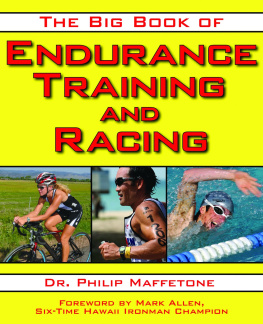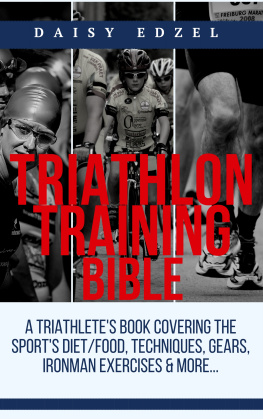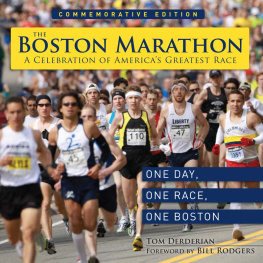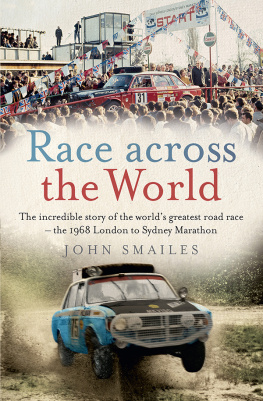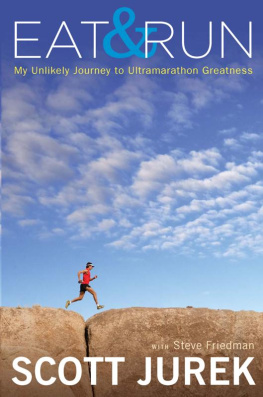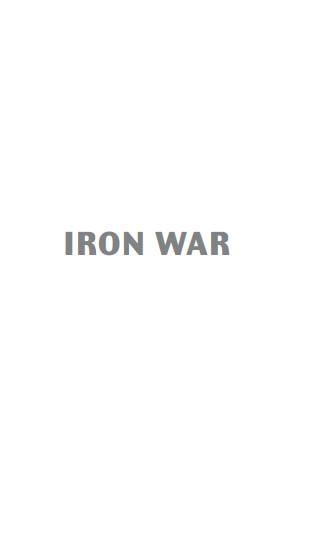
Copyright 2011 by Matt Fitzgerald
Ironman is a registered trademark of World Triathlon Corporation.
All rights reserved. Published in the United States of America by VeloPress, a division of Competitor Group, Inc.

3002 Sterling Circle, Suite 100
Boulder, Colorado 80301-2338 USA
(303) 440-0601 Fax (303) 444-6788 E-mail
Distributed in the United States and Canada by Ingram Publisher Services
Library of Congress Cataloging-in-Publication Data
Fitzgerald, Matt.
Iron war: Dave Scott, Mark Allen & the greatest race ever run / Matt Fitzgerald
with Bob Babbitt.1st ed.
p. cm.
ISBN 978-1-937716-08-0
1. Ironman triathlons. 2. Scott, Dave. 3. Allen, Mark, 1958 I. Babbitt, Bob. II. Title.
GV1060.73.F575 2011
796.4257dc23
2011027408
Cover design by the BookDesigners
Interior design by Katie Jennings
Interior illustrations by Charlie Layton
Photo editing by Nick Salazar
For information on purchasing VeloPress books, please call (800) 811-4210 ext. 2138 or visit www.velopress.com .
v. 3.0
IN MILITARY AFFAIRS THE STRENGTH OF AN ARMY is the product of its mass and some unknown x.... That unknown quantity is the spirit of the army, that is to say, the greater or lesser readiness to fight and face danger felt by all the men composing an army, quite independently of whether they are, or are not, fighting under the command of a genius, in two- or three-line formation, with cudgels or with rifles that repeat thirty times a minute. Men who want to fight will always put themselves in the most advantageous conditions for fighting.
LEO TOLSTOY, WAR AND PEACE
CONTENTS
CHAPTER 1
THE MOMENT
A hero is no braver than an ordinary man, but he is brave five minutes longer.
RALPH WALDO EMERSON
Two men run shoulder to shoulder down the middle of the Queen Kaahumanu Highway on Hawaiis Big Island, pressing southward toward the coastal town of Kailua-Kona. The road they travel cuts a narrow artery through a vast black lava field that supports no life save for a few scattered tufts of hardy fountain grass. Hazy clouds above trap muggy hotness below like the lid of a steaming kettle. A slick coat of rank sweata microcosm of the smothering atmospherebastes the skin of the hard-breathing runners, sealing in the heat churned out by the fiery furnaces of their muscles.
Both men are tall and lean, with the characteristic legs of elite triathleteslither than those of cyclists, more muscular than those of runnersextending sinuously beneath skimpy 1980s running shorts. Each man hides a thousand-yard stare behind sport sunglasses, but their slack cheeks betray a deathly weariness.
They are not alone. A caravan of mopeds, bicycles, cars, Jeeps, and trucks has formed behind the athletes, the spectators aboard these conveyances having been drawn into the convoy by the spreading news of the spectacle they now behold. A few of the motorized vehicles and most of the bikes should not be where they are, as the highway is closed to normal transit, but the race marshals have lost control and no longer care. Caught up in the same hypnosis as everyone else, they simply follow and watch.
It is a strange apparition, this silent caravan, a sort of motley roving amphitheater, made stranger still by its silence. Those watching dare not speak a word for fear of breaking the spell in which all are complicit. Aside from the occasional shout of encouragement from a volunteer at a roadside drink station, the only sound to be heard is the rhythmic huffing of the athletes exhalations and the soft slapping of their feet against the pavement.
Right on! screams one young man as the runners approach the drink station hes staffing. Right! On! he repeats, cheering not for one runner or the other but for the performance itself, losing his mind in excitement as he witnesses the consummation of every fans notion of the best thing that could possibly be happening in this, the most anticipated showdown in the history of triathlonthe sports two towering heroes running each other into the ground, obliterating records and annihilating all other competitors, eight hours into a duel in which they have never been more than a few feet apart.
The man on the right, dressed in green, black, and white Brooks apparel, is Dave Scott, six-time winner of this race, the Ironman World Championship. The runner in yellow, black, and white Nike apparel is Mark Allen, six-time loser of Ironman, winner of everything else.
They continue. Each man runs not as fast as he can but as fast as the other can, having already swum 2.4 miles, bicycled 112 miles, and run 24 miles, with the balance of a marathon left to run, all in tar-melting heat. That is why the pair remains as if tethered wrist to wrist after racing nearly a full-day shift, well ahead of 1,284 of the best triathletes in the world. Each is trying with all his might to break the body, mind, or spirit of the other, but although all of these elements in both have been stretched to the breaking point, none has yet broken.
Within their minds a pitched battle is being waged between unimaginable suffering and an equally intense desire to resist that suffering and win. The pain in their thighs, especially, is so severe that in any other context they would find it impossible to walk a single step. Yet each continues to run sub-six-minute miles because each still believes the pain is worth the hope of winning.
An expectant crowd waits at the finish line in downtown Kailua-Kona. All they know of the great struggle taking place on the Queen K Highway is what little information the race announcer provides in sporadic updates based on garbled two-way radio reports from the field. Yet these crumbs are more than enough to captivate them.
While the multitude waits, the competitor who is currently in twenty-seventh place in the race encounters Dave Scott and Mark Allen and their silent caravan head-on (its an out-and-back course) and stops cold to watch them. He has devoted months of hard training to preparing for this day. For several seconds he claps and shouts like any other spectator, momentarily indifferent to his own performance.
A photographer leaps off the back of his chauffeured motorcycle and attempts to capture close-up images of the combatants while sprinting alongside them. Immediately he recognizes his mistake. Although young and fit himself, he quits in exhaustion after fifty yards. Before leaping back on his motorcycle, he watches the runners speed away down the road, the camera slung from his neck briefly forgotten.
Seated on the trunk of a convertible some fifty feet behind Dave and Mark, his shoes resting on the back seat, is Bob Babbitt, the 38-year-old publisher of San Diegobased Competitor magazine. His face is frozen in a faint grin. He believes he is watching the greatest race ever run. The cover line for the next issue of his publication has already come to him: Iron War.
IRONMAN IN 1989 means more to the young sport of triathlon than any other major championship means to any other sport. It is virtually the sport itselfthe only race that really matters. Fans and sponsors dont care how many other triathlons you win if you dont win Ironman. Thats why short-course specialist Mike Pigg, feared in two-hour races, is competing in this race even though its way too long for him. Its why Scott Molina, winner of numerous events in cooler places, kept doing Ironman, despite being no good in the heat, until he cherry-picked a victory last year, taking advantage of Daves absence and Marks bad luck. Hell, even duathlon star Kenny Souza, dominant in run-bike-run events, feels compelled to try, and he cant really swim.
Next page

